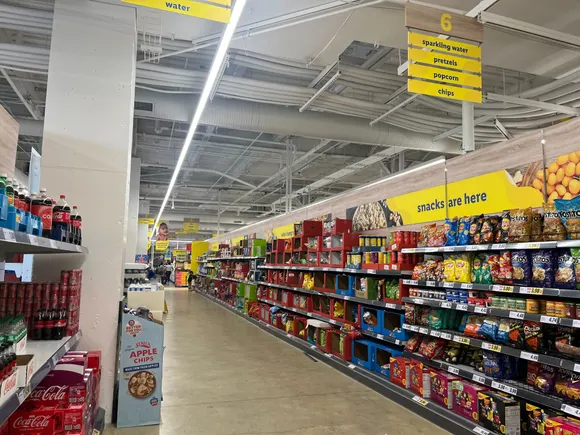The snacking industry has seen a significant shift in consumer behavior, with grocers playing a pivotal role in this evolving landscape. According to a recent report from NielsenIQ, grocers have managed to capture sales of nearly 160 million bags of chips, boxes of crackers, and other snacks from their competitors in the 52-week period ending on March 22. However, they have also lost around 56 million snack unit sales to club and mass merchandisers during the same period.
The report highlights a change in consumer preferences, as price-conscious shoppers are cutting back on snack spending and gravitating towards larger pack sizes and private label options. This trend poses both opportunities and challenges for grocers in the competitive snacking market.
NielsenIQ’s research reveals that consumers are adopting various strategies to save money on snacks. While grocers are successfully diverting snacking dollars from impulse purchase retailers like convenience stores, drug stores, and dollar stores, they are also facing stiff competition from club retailers like Costco and Sam’s Club. In fact, grocers lost $247 million in snack sales to club retailers and mass merchandisers, indicating a significant loss in market share.
Despite the challenges, grocers have advantages in the snacking space. The report shows that 42% of shoppers are buying snacks less frequently, with 63% opting for larger sizes to save money in the long run. This shift towards bulk buying aligns with grocers’ offerings of multipacks and family-size bags. Additionally, private label snacks are gaining traction among consumers, with 80% stating that these products offer equal or better quality compared to name brands.
E-commerce is also emerging as a popular channel for snack purchases, with 294 snack unit sales transitioning from brick-and-mortar stores to online platforms. This trend underscores the importance of omnichannel strategies for grocers looking to stay competitive in the snacking market.
Overall, grocers remain the primary destination for snack purchases, followed by mass merchandisers and dollar stores. By understanding and adapting to evolving consumer trends, grocers can position themselves for success in the dynamic snacking industry.


